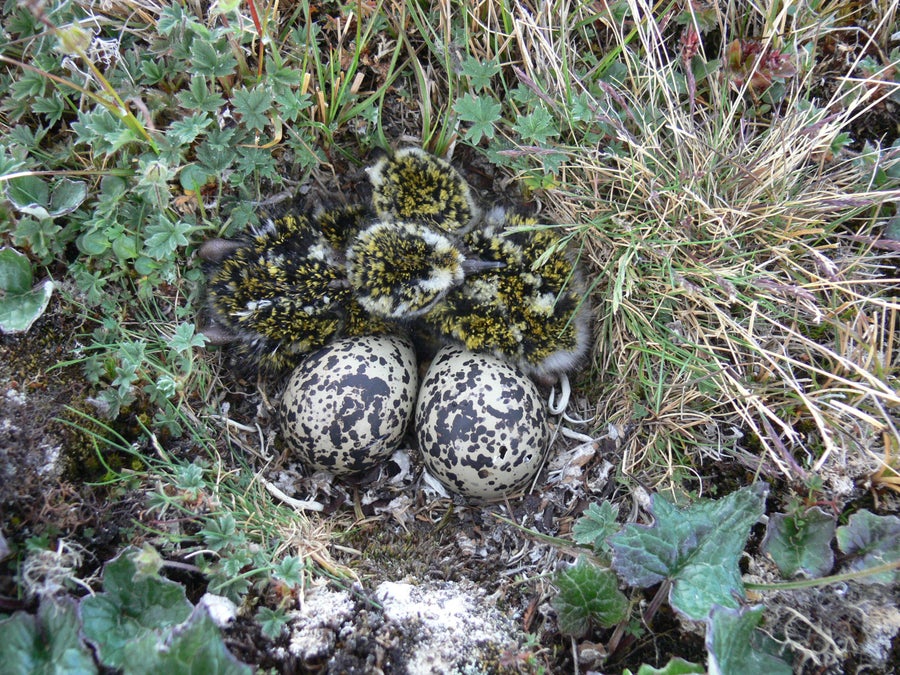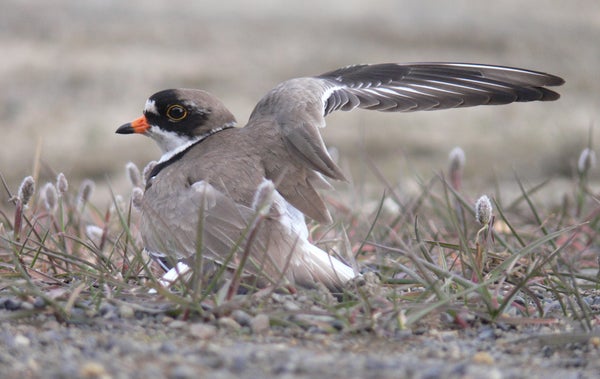Across the planet, shorebirds are in serious trouble. In the past 50 years their well-documented North American populations are estimated to have plummeted by at least 70 percent on average, and shorebirds elsewhere are hardly doing better, if not worse.
Reasons are many—the shorelines and mudflats where the birds feed are polluted or disappearing, and many of the migrants among them struggle to find food and resting places in areas where they used to. Some are also targeted by hunters.
For a species to survive in the face of such an onslaught, a large number of healthy baby birds need to enter the population each year. Biologists have long believed this is one of the reasons many birds migrate north to breed; the challenging Arctic climate should keep them from being bothered by nest predators as frequently as birds in the tropics.
On supporting science journalism
If you're enjoying this article, consider supporting our award-winning journalism by subscribing. By purchasing a subscription you are helping to ensure the future of impactful stories about the discoveries and ideas shaping our world today.
Yet when a team of European researchers set out in 2015 to do a large-scale study to properly test this idea, they were in for a surprise. “When Vojtěch Kubelka, a PhD student who proposed this study, first analyzed a limited data set,” says Tamás Székely, an ornithologist at the University of Bath in England, “we were surprised to find that in recent years, it may have been the other way around: In the last two decades, Arctic birds appeared to have been worse off.”

Golden chicks of American Golden Plover (Pluvialis dominica) match surroundings to not attract predators, Barrow, Alaska, 2012. Credit: Vojtěch Kubelka
An intense search for more data ensued, resulting in a large analysis featuring data on 38,191 nests in 237 shorebird populations around the world that ornithologists have monitored during breeding seasons by looking for signs of predation such as broken egg shells. The results of the study, published last week in Science, are pretty clear: In the 1970s, ‘80s and early ‘90s tropical shorebird nests were indeed suffering the most predation—but since then, as nests around the world have been losing more eggs to predators, the ones in the Arctic have been especially hard-hit. The tropics did see a statistically insignificant increase, but the numbers in the Arctic are staggering: Just a few decades ago only one Arctic egg in three would be lost to predators. Today two out of three are eaten.
The researchers believe climate change is a major culprit. “Our analysis shows that the faster the annual mean temperature has increased, the higher the predation on eggs has become,” Székely says.
Possible explanations for this remain unclear. “It could be that there are more predators now, or fewer other prey such as lemmings,” Székely says. Rolf Ims, an ecologist at The Arctic University of Norway who is involved in a food chain–monitoring program in the Norwegian Arctic, agrees. “In warmer winters there tends to be more rain, which can lead to the formation of an ice layer on the snow that prevents lemmings from finding food,” says Ims, who did not take part in the new study. “If lemmings disappear, predators might turn to eggs.”
Ims notes predators such as red foxes and hooded crows are known to be moving north, and he suggests this might also be linked to climate change—specifically to increased plant growth under warmer conditions. “Foxes and crows eat berries and plant-eating invertebrates as well, so they would benefit from more plant biomass,” he says. “And they can also feed on the rodents and reindeer that die when the snow freezes over.” Once these predators are established they would be unlikely to say no to a nest of nutritious shorebird eggs. Ims finds the patterns revealed by the study convincing, and notes more research on predation is needed. “I do hope this study will inspire others to start looking into this now, as the consequences of the pattern we have revealed could be devastating,” Székely says. In fact, he adds, it could make migration itself a lot less attractive. “One of the reasons birds breed in the Arctic is that there is an abundance of insects in summer,” he says. “But the other, I believe, is that their nests used to be much safer there. If this ceases to be the case, migration might turn out to be a waste of energy.”
Long-distance migrants are declining, says Paul Allen Smith, an Arctic conservation ecologist at Environment and Climate Change Canada, a government department. “This suggests that the benefits of long-distance migration are not what they once were.” An earlier Science paper Smith co-wrote about nest predation in the Canadian Arctic between 2004 and 2008 reported an opposite pattern, in the sense predation on artificial nests there decreased as the researchers moved north. Yet Smith and his colleagues’ regional data on artificial nests are difficult to compare with those in the new study because Székely and his team have used existing worldwide data on predation of real nests instead. In any case, Smith agrees the low and declining global nest survival revealed by the study are a cause for concern.
“What was really shocking to me,” Székely says, “is that shorebird survival is now not just compromised where humans abound—but also, via the climate, in very remote areas, including some of the least-inhabited places on Earth.” In certain cases he believes it may be necessary to fence off breeding areas or even cull wild predators, something the Norwegian Environment Agency is already doing with red foxes in some areas. More importantly, Székely argues, humans should double down on our efforts to prevent climate change, and should fight other threats such as hunting and loss of resting sites that may be more manageable. And of course, he adds, you might want to think twice about keeping a predatory pet at home if you live near a shorebird breeding area. “I love cats,” he says, “but when they go out at night, they can really wreak havoc.”
